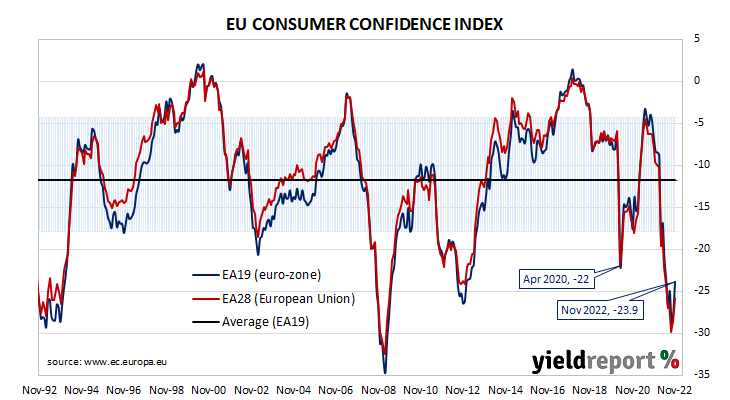Summary: Euro-zone households less pessimistic in November; consumer confidence Index up 3.6 points; still well below long-term average, lower bound of “normal” readings; supported by easing utility prices, gas storage levels, hopes of geopolitical solutions; euro-zone bond yields moderately lower.
EU consumer confidence plunged during the GFC and again in 2011/12 during the European debt crisis. After bouncing back through 2013 and 2014, it fell back significantly in late 2018 but only to a level which corresponds to significant optimism among households. Following the plunge which took place in April 2020, a recovery began a month later, with household confidence returning to above-average levels from March 2021. However, recent readings have been extremely low by historical standards.
Consumer confidence improved for a second consecutive month in November according to the latest survey conducted by the European Commission. Its Consumer Confidence Indicator recorded a reading of -23.9, above the generally expected figure of -26.0 as well as October’s revised figure of -27.5. However, this latest reading is still well below the long-term average of -11.6 as well as the lower end of the range in which “normal” readings usually occur.
“That was the highest reading since June and has been supported by easing utility prices, high levels of EU gas storage and some hopes that geopolitical tensions in Europe may improve,” said ANZ senior economist Felicity Emmett.
Sovereign bond yields fell moderately in major euro-zone bond markets on the day. By the end of it, the German 10-year bund yield had lost 4bps to 1.98% while the French 10-year OAT yield finished 3bps lower at 2.45%.


